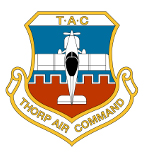My existing LED landing light set up on 78WG failed the other night on a dark moonless night. It had a Rigid Industries PAR 36 R+ which is a 2.5 inch light with a slotted 4.5 inch bezel. I can find the same replacement, but there's a significant wait. Additionally, I've never been a big fan of having the light in the inlet to begin with. Shopping around, I'd rather put a Whelen Parethemus G3 in, but that light fills the entire bezel. I'm concerned having this much of the inlet blocked by the light will cause a hot spot and lead to pre-mature failure of the cylinders. I've seen this happen on a 0-235 that had a homemade winterization kit installed.The kit cause hot spots on the cylinder wall leading to the wrist pin buttons heating up and failing. Any thoughts on what might be an acceptable amount of inlet blockage? I've considered moving the light elsewhere but would like to avoid modifying Walt's work to the max extent possible.
The Whelen
https://www.aircraftspruce.com/catalog/ ... kkey=22462The Existing set up
https://overlander.com/products/rigid-i ... 0EQAvD_BwEThe current install setup

V/r,
Andy
N78WG







